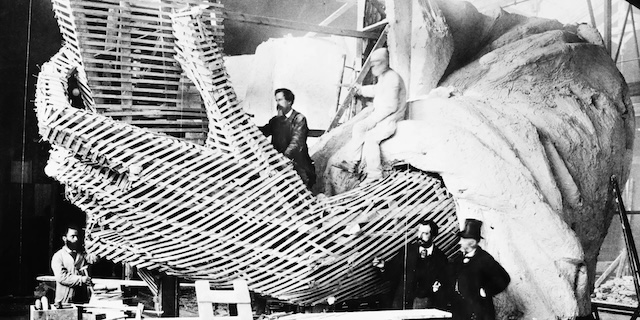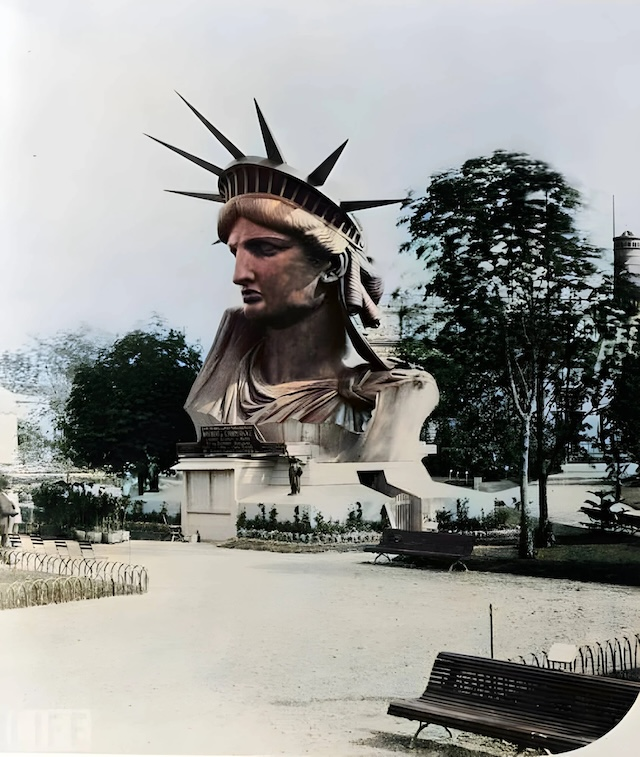When we think of the Statue of Liberty today, we picture an iconic symbol of freedom, a towering woman holding a torch in New York Harbor. But what most people don’t know is that this cherished monument almost never happened. It wasn’t politics or design that threatened her existence—it was cold, hard cash. Behind the grandeur of “Liberty Enlightening the World” lies a gritty story of fundraising, public unity, and a newspaper publisher who refused to let the dream die.
Let’s pull back the curtain on one of America’s most treasured symbols and uncover the uphill battle that brought her to life.

France’s Vision: A Gift of Friendship and Freedom
The idea for the statue was born in France, not America. Around 1865, French historian Édouard de Laboulaye proposed gifting a statue to the United States as a symbol of the alliance between the two nations and to celebrate America’s abolition of slavery. At a time when democracy was fragile in France, this was also a clever nudge for his fellow countrymen to embrace similar ideals.
Sculptor Frédéric-Auguste Bartholdi took the idea and ran with it. His vision? A colossal statue named Liberty Enlightening the World. She would stand as a lighthouse of hope and freedom—an emblem not just of America, but of the values both nations aspired to uphold.
France agreed to fund and build the statue itself, including shipping it across the Atlantic in pieces. But there was a catch: the United States had to build the pedestal.
Video: The Statue of Liberty: Building an Icon
America’s Unexpected Financial Struggle
You’d think raising funds for a monument of this scale and importance would be easy. But in the 1880s, it was anything but.
Despite France’s generous gift, the United States struggled to pay for the base. Congress couldn’t agree on federal support. New York Governor Grover Cleveland—yes, the same man who’d later dedicate the statue—refused to authorize city funds. The project stalled. The statue arrived in crates in 1885, but without a pedestal to stand on, Lady Liberty had nowhere to go.
The American Committee for the Statue of Liberty had raised some funds, but not nearly enough. They needed around $250,000—a huge sum at the time. Hope was fading fast.
Joseph Pulitzer to the Rescue

Enter Joseph Pulitzer, the immigrant-turned-powerhouse newspaper publisher behind the New York World. On March 16, 1885, Pulitzer published a fiery editorial calling on everyday Americans—not just the wealthy elite—to help fund the pedestal.
And he didn’t stop there. Pulitzer offered something unique: every single person who donated, no matter how small the amount, would get their name printed in the paper. It was genius. Suddenly, everyone from school kids to dock workers saw themselves as part of something bigger.
He ran personal stories alongside the donor names—moving, often emotional tales from immigrants, families, and average Americans who were proud to contribute what little they could.
A Nation Unites: Crowdfunding Before the Internet

Pulitzer’s campaign struck a national nerve. In just five months, over 120,000 people donated to the cause. The total raised? More than $100,000—enough to finish the pedestal and secure Lady Liberty’s place in the harbor.
It was one of the first truly successful crowdfunding efforts in history. And it proved something powerful: that when people are given the chance to be part of a shared mission, they’ll rise to the occasion.
This wasn’t just about building a base for a statue. It was about ownership. Pride. A feeling that this gift from France didn’t belong to the government—it belonged to the people.
Assembling Liberty: A Monumental Effort
Video: 18 Statue of Liberty Secrets They Don’t Tell Tourists (But We Will)
The statue finally arrived in New York Harbor in June 1885—in 350 individual pieces packed into 214 wooden crates. It was essentially a giant 3D puzzle, just waiting to be put together.
But construction couldn’t begin until the pedestal was complete. Workers spent months racing to finish the base on Bedloe’s Island (now Liberty Island). Once it was ready, crews began assembling the statue using massive iron frameworks designed by none other than Gustave Eiffel—yes, the same engineer behind the Eiffel Tower.
Piece by piece, Lady Liberty rose above the harbor.
October 28, 1886: The Dedication of a Legend

Finally, on October 28, 1886, the Statue of Liberty was unveiled. President Grover Cleveland presided over the dedication ceremony. The excitement was overwhelming. Before he could even begin his speech, the crowd applauded for a full 15 minutes.
This wasn’t just a statue—it was a symbol. A unifying force. A reminder of what democracy, freedom, and international friendship could achieve, even in the face of massive obstacles.
More Than Just a Statue
The story of the Statue of Liberty is often told as a straightforward tale of French-American unity. But at its core, it’s a story of persistence, of grassroots effort, and of regular people coming together for a cause that was bigger than themselves.
And it’s also a story about how media—when used responsibly—can empower people, unite communities, and turn a stalled project into a national triumph.
Joseph Pulitzer didn’t just raise money. He raised voices. He gave America a way to say, “We want this. We believe in this.”
Conclusion: A Lasting Symbol of Determination

The Statue of Liberty didn’t rise from the harbor because someone signed a check. She rose because ordinary people—immigrants, workers, students—gave what they could and believed in what she stood for.
She stands today not just as a symbol of freedom, but as a testament to what’s possible when people work together. Her foundation was literally built by the people, for the people. And that story deserves to be remembered just as much as the monument itself.
So next time you see Lady Liberty, whether in person or in a photo, remember this: she’s not just a statue. She’s a promise—a reminder that democracy survives not through declarations, but through dedication.


